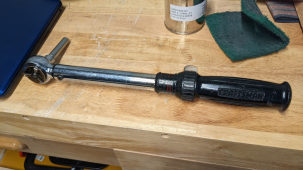I have (2) 280Ah 24V diy battery packs that I have had up and running for about a year now. I am off grid and these batteries have literally changed my life in so many ways, but I have had connection/corrosion issues that seem to crop up more and more and I am looking for a solution.
I am using the tinned busbars that came from Basen with my cells and when I initially put them together, I gave each connection (both the terminal and the busbar) a light sanding with 3M P320 sandpaper, wiped them down with isopropyl alcohol, and then a light coating of Ox-guard and tightened them up snug. This seems to work out fine for the short terms, but every month or two my BMS shows something strange on a cell and I need to take things apart near that cell and re-do them.
Do other folks who made a DIY battery have these issues? If you have had your batteries put together for longer than 6 months and aren't having any of these issues, can you tell me what you did to connect the batteries? Anybody see any issues with how I did the connections? Was it a mistake to lightly sand the tinned busbars? I am willing to invest in a new or better solution so any suggestions welcome. Thanks!
I am using the tinned busbars that came from Basen with my cells and when I initially put them together, I gave each connection (both the terminal and the busbar) a light sanding with 3M P320 sandpaper, wiped them down with isopropyl alcohol, and then a light coating of Ox-guard and tightened them up snug. This seems to work out fine for the short terms, but every month or two my BMS shows something strange on a cell and I need to take things apart near that cell and re-do them.
Do other folks who made a DIY battery have these issues? If you have had your batteries put together for longer than 6 months and aren't having any of these issues, can you tell me what you did to connect the batteries? Anybody see any issues with how I did the connections? Was it a mistake to lightly sand the tinned busbars? I am willing to invest in a new or better solution so any suggestions welcome. Thanks!




